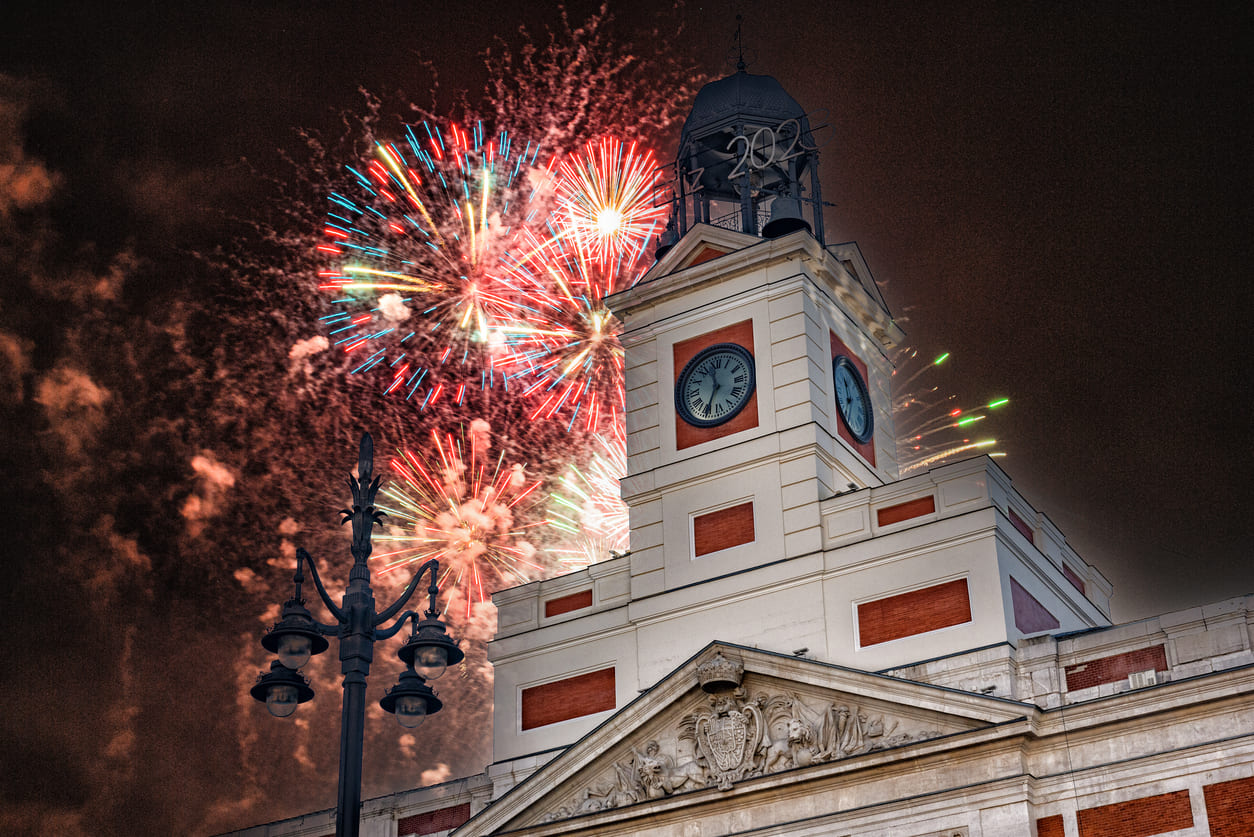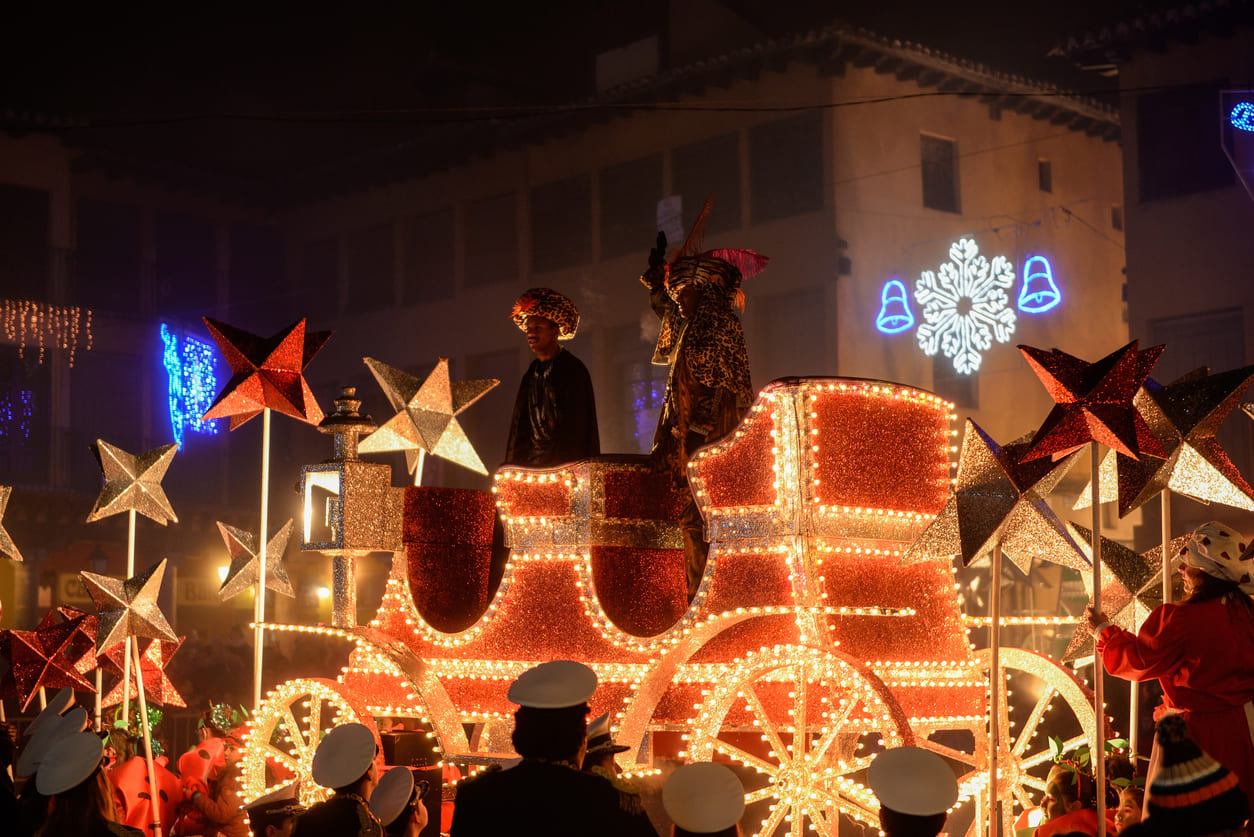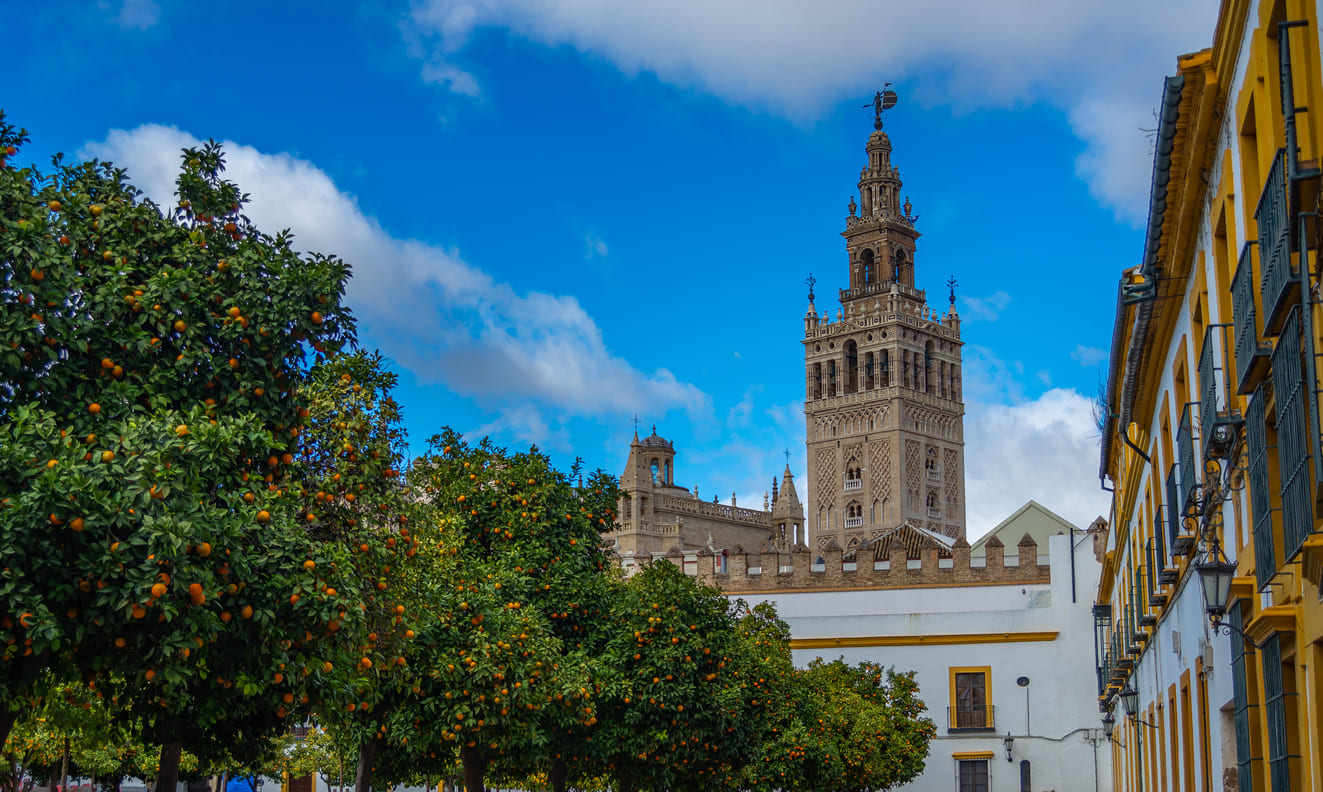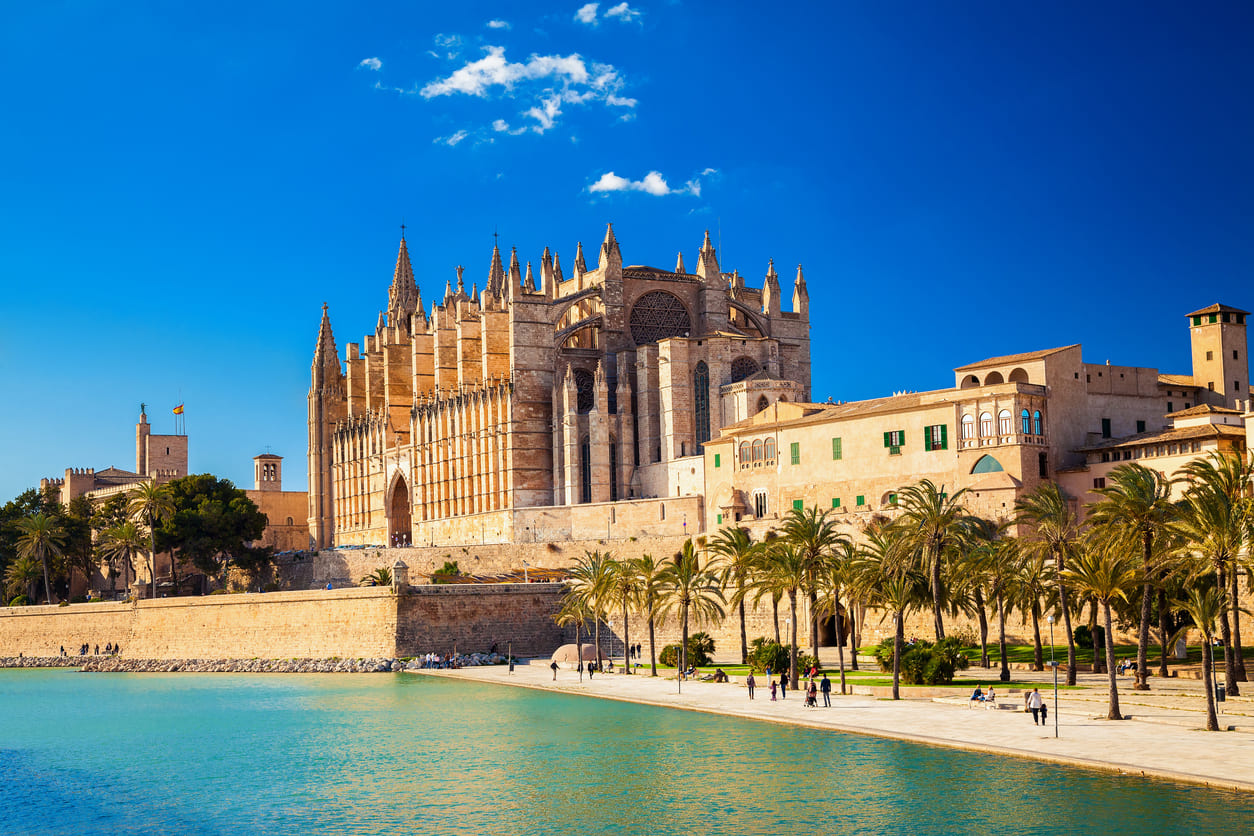Dates of New Year's Eve in Spain
| 2026 | Dec 31 |
| 2025 | Dec 31 |
| 2024 | Dec 31 |
Related Holiday in Spain
Spain Holiday Calendars
On New Year's Eve, Spaniards celebrate Nochevieja with lively gatherings, fireworks, and the tradition of eating twelve grapes at midnight, one for each chime of the clock, to bring good luck for the year ahead. Festivities continue with music, dancing, and celebrations until dawn.
New Year's Eve: A Public Holiday?
New Year's Eve is not a public holiday in Spain, so businesses, offices, and schools generally operate as usual. However, many close earlier than normal to give people time to prepare for the night's festivities and traditions.
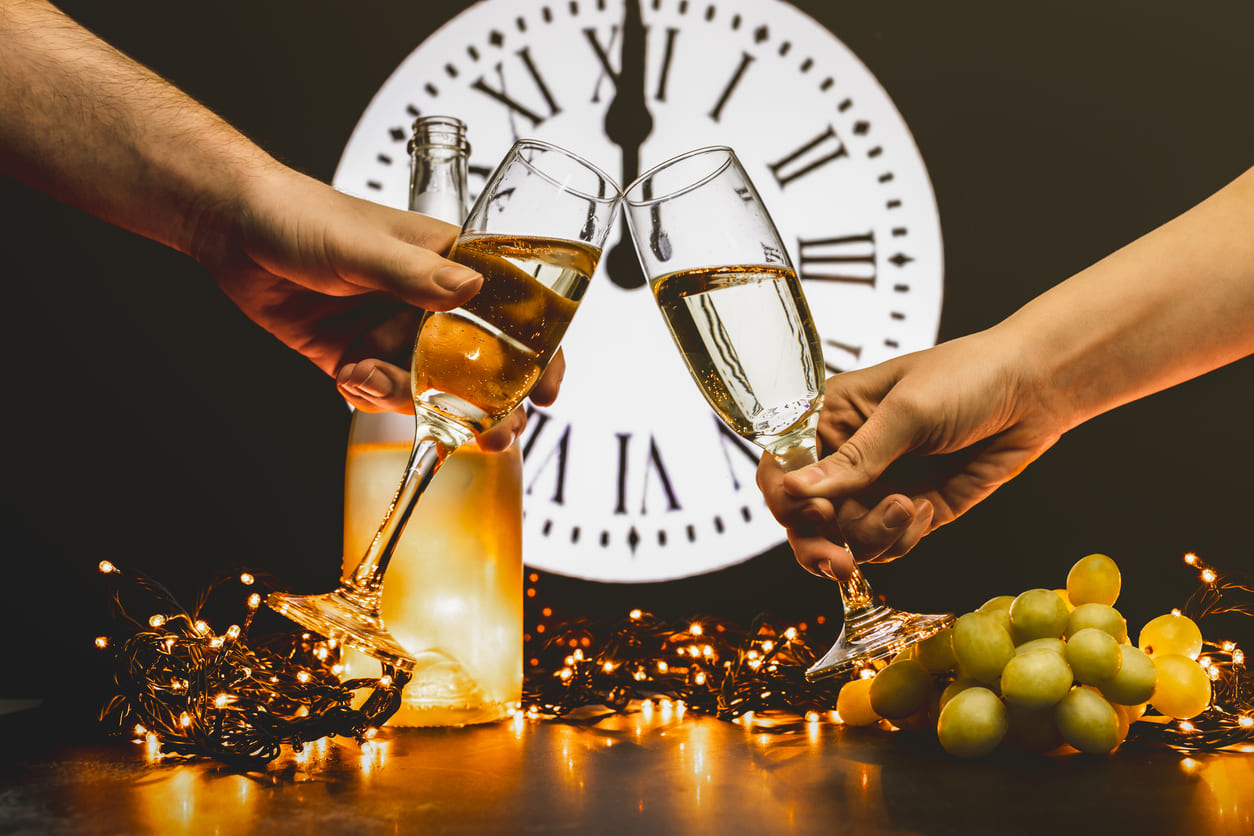
New Year's Eve
New Year's Eve, known as Nochevieja in Spain, has been celebrated for centuries with various customs. One of the most famous traditions, eating twelve grapes at midnight, dates back to 1895 when grape farmers in Alicante promoted the idea to boost sales. The practice quickly became popular and is now a deeply rooted tradition. The celebrations have evolved over time, influenced by both local and international customs. New Year's Eve was mainly a family affair in the past, but public events, fireworks, and parties have become common over the years. The Puerta del Sol in Madrid has become the most iconic place for welcoming the new year, with thousands gathering to follow the clock chimes. Despite modern influences, Spain has kept its unique customs alive, making Nochevieja a special and symbolic night for the Spanish people.
New Year's Eve Celebration in Spain
New Year's Eve in Spain is a night of joy, traditions, and celebration. Families and friends gather for dinner, often enjoying seafood, lamb, or other festive dishes. The most awaited moment is midnight, when people eat twelve grapes, one for each stroke of the clock, believing it brings good luck for the coming year. This tradition is followed across the country, with many watching the live broadcast from Puerta del Sol in Madrid, where a massive crowd gathers to welcome the new year. After midnight, the celebrations continue with fireworks, music, and toasts with cava, Spain's sparkling wine.
For many, the night does not end after midnight. People head to bars, clubs, or street parties, dancing and celebrating until dawn. Some cities host outdoor concerts and special events, making the night even more festive. Another common tradition is wearing red underwear, believed to bring love and good fortune in the new year. Some people also put a gold ring in their glass of cava while making a toast, hoping for wealth and prosperity. After the long night of fun, many enjoy chocolate con churros in the early morning before heading home.
New Year's Eve is more than just a party in Spain; it holds cultural and emotional significance. It is a time to say goodbye to the past year and welcome the new one with hope and positivity. The traditions, especially eating grapes at midnight, unite the country in a shared moment of excitement. It is also an occasion to celebrate with loved ones, reinforcing the importance of family and friendship. Whether at home, in the streets, or at a big party, Nochevieja is a night that brings people together in joy and anticipation for the year ahead.
New Year's Eve Observances
| Year | Date | Weekday | Name | Holiday Type |
|---|---|---|---|---|
| 2024 | Dec 31 | Tue | New Year's Eve | Observance |
| 2025 | Dec 31 | Wed | New Year's Eve | Observance |
| 2026 | Dec 31 | Thu | New Year's Eve | Observance |
| 2027 | Dec 31 | Fri | New Year's Eve | Observance |
| 2028 | Dec 31 | Sun | New Year's Eve | Observance |
